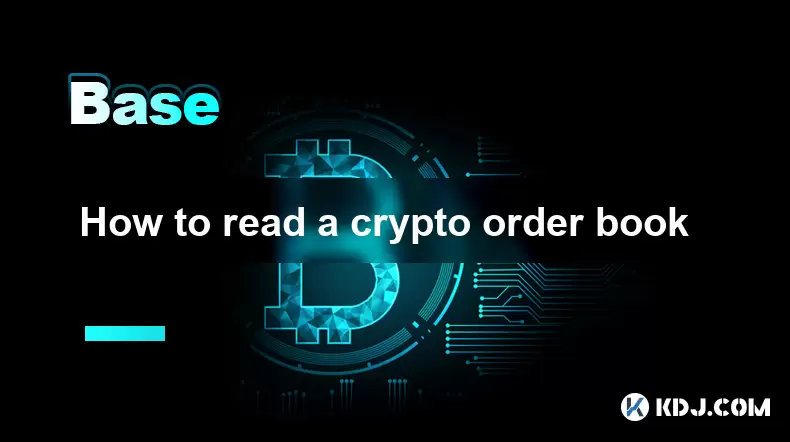-
 Bitcoin
Bitcoin $117400
0.05% -
 Ethereum
Ethereum $3767
0.13% -
 XRP
XRP $3.554
2.85% -
 Tether USDt
Tether USDt $1.000
0.01% -
 BNB
BNB $766.5
1.11% -
 Solana
Solana $196.6
8.51% -
 USDC
USDC $0.0000
0.01% -
 Dogecoin
Dogecoin $0.2716
-0.23% -
 Cardano
Cardano $0.8901
3.81% -
 TRON
TRON $0.3144
0.09% -
 Hyperliquid
Hyperliquid $44.52
-3.11% -
 Stellar
Stellar $0.4735
2.59% -
 Sui
Sui $3.978
2.18% -
 Chainlink
Chainlink $19.59
1.45% -
 Hedera
Hedera $0.2715
0.05% -
 Avalanche
Avalanche $25.48
1.87% -
 Bitcoin Cash
Bitcoin Cash $523.6
-4.49% -
 Shiba Inu
Shiba Inu $0.00001551
0.09% -
 Litecoin
Litecoin $115.9
-0.92% -
 UNUS SED LEO
UNUS SED LEO $8.992
0.06% -
 Toncoin
Toncoin $3.336
2.13% -
 Polkadot
Polkadot $4.510
0.70% -
 Uniswap
Uniswap $10.91
2.37% -
 Ethena USDe
Ethena USDe $1.001
0.02% -
 Pepe
Pepe $0.00001421
1.31% -
 Monero
Monero $320.2
-1.73% -
 Bitget Token
Bitget Token $4.950
0.14% -
 Dai
Dai $0.0000
-0.02% -
 Aave
Aave $323.3
0.00% -
 Bittensor
Bittensor $447.5
8.38%
How to read a crypto order book
The crypto order book shows real-time buy and sell orders, helping traders analyze market depth, liquidity, and potential price movements based on supply and demand.
Jul 21, 2025 at 08:49 pm

Understanding the Basics of a Crypto Order Book
A crypto order book is a real-time list of buy and sell orders for a particular cryptocurrency on a trading platform. It provides transparency into the market depth, showing traders the supply and demand at various price levels. The order book typically consists of two main sections: bids (buy orders) and asks (sell orders). Each side displays the quantity of crypto an investor is willing to buy or sell and at what price.
For example, if you're looking at Bitcoin's order book on a popular exchange like Binance or Coinbase, you'll see multiple bid prices below the current market price and ask prices above it. The highest bid represents the most someone is willing to pay to buy the asset right now, while the lowest ask reflects the least someone wants to receive in exchange for selling their coins.
Order books are essential tools for understanding market sentiment and predicting short-term price movements.
How to Interpret Bid and Ask Prices
The bid-ask spread is one of the most important aspects of any order book. This is the difference between the highest price a buyer is willing to pay (highest bid) and the lowest price a seller is willing to accept (lowest ask). A narrow spread usually indicates high liquidity and strong interest in the asset, while a wide spread suggests low liquidity or less trading activity.
Each bid entry shows how much of the cryptocurrency a trader is willing to buy at a certain price. Similarly, each ask entry reveals how much is available for sale at a specific price point. As trades execute, these entries update dynamically. When a buy order matches a sell order, the trade is completed, and that line disappears from the order book.
- Bids – Represent demand, displayed in green on many platforms
- Asks – Represent supply, often shown in red
- Price Levels – Indicate where buyers and sellers are concentrated
Identifying Market Depth Through the Order Book
Market depth refers to the volume of buy and sell orders at different price points. A deep order book means there are large volumes of orders stacked up near the current price, which can absorb large trades without causing significant price slippage. In contrast, a shallow order book may result in sharp price swings when large orders are executed.
To visualize this, some exchanges offer a depth chart, which is a graphical representation of the order book. The x-axis shows the price, and the y-axis shows the cumulative amount of crypto available at each price level. This helps traders assess potential support and resistance levels based on where the majority of buy and sell orders are placed.
Traders use market depth to gauge whether the price is likely to rise or fall based on existing order flow.
How to Use the Order Book for Trading Decisions
Analyzing the order book can help traders make informed decisions about entering or exiting positions. For instance, if there’s a large cluster of buy orders just below the current market price, it might suggest that the price could find support there. Conversely, a heavy concentration of sell orders above the current price could act as a resistance zone.
Some advanced traders also look for signs of order book imbalance, where one side (buy or sell) significantly outweighs the other. If the sell side has much more volume than the buy side, it could signal downward pressure on the price. However, it's important not to rely solely on the order book — always combine it with other technical indicators like volume, moving averages, or candlestick patterns.
- Watch for sudden spikes in buy/sell volume – These can indicate upcoming price movement
- Look for hidden orders or iceberg orders – Large players sometimes hide their full intentions
- Monitor time-stamped changes – Real-time updates can reveal aggressive buying or selling
Practical Steps to Read an Order Book on a Trading Platform
Most exchanges display the order book in a table format next to the price chart. Here’s how to interpret it step by step:
- Locate the order book section – Usually found on the right or bottom part of the trading interface
- Observe the highest bid and lowest ask – These are the best prices to buy or sell immediately
- Scroll through the list of bids and asks – See how much volume is available at each price level
- Check the total volume at each level – Helps estimate how much it would take to move the price
- Use color coding – Green for bids, red for asks, helping quickly identify market bias
Some platforms allow users to customize how much data they want to view — for example, aggregating orders within a certain price range or displaying only top-level orders. Understanding how your chosen exchange structures its order book is key to using it effectively.
Frequently Asked Questions
What does it mean when the order book is imbalanced?
An imbalanced order book occurs when either the buy or sell side has significantly more volume. If the buy side dominates, it could indicate bullish sentiment. If the sell side is heavier, it might suggest bearish pressure. However, this doesn’t guarantee price movement since large orders can be canceled or manipulated.
Can I place hidden orders in the order book?
Yes, some exchanges allow advanced traders to place iceberg orders, which only show a small portion of the total order size. This prevents large players from revealing their full intentions and potentially influencing the market.
Why do some order books show aggregated data?
Aggregated order books combine similar price levels to provide a cleaner, more digestible view. This helps traders spot trends and major support/resistance zones more easily, especially during volatile market conditions.
Is the order book useful for long-term investors?
While order books are primarily used by active traders, long-term investors can still benefit by understanding market sentiment and potential price barriers. However, they should focus more on fundamentals and macro trends rather than short-term order flow.
Disclaimer:info@kdj.com
The information provided is not trading advice. kdj.com does not assume any responsibility for any investments made based on the information provided in this article. Cryptocurrencies are highly volatile and it is highly recommended that you invest with caution after thorough research!
If you believe that the content used on this website infringes your copyright, please contact us immediately (info@kdj.com) and we will delete it promptly.
- Bitcoin, Trump Media, and Acquisition: A New York Perspective
- 2025-07-22 06:30:12
- Venture Capital, Crypto Treasuries, and Ethena (ENA): A New York Perspective
- 2025-07-22 06:50:13
- Solana: Building a Decentralized Nasdaq with Block Assembly Marketplace?
- 2025-07-22 06:30:12
- Jito, BAM, and Solana MEV: A New Era for Blockspace?
- 2025-07-22 06:50:13
- Raydium, Crypto Payroll, and Transformation: A New Era for Fintech
- 2025-07-22 07:30:12
- Arctic Pablo Coin Presale: The Meme Coin Opportunity of 2025?
- 2025-07-22 07:35:12
Related knowledge

What is the difference between CeFi and DeFi?
Jul 22,2025 at 12:28am
Understanding CeFi and DeFiIn the world of cryptocurrency, CeFi (Centralized Finance) and DeFi (Decentralized Finance) represent two distinct financia...

What is the difference between a sidechain and a Layer 2?
Jul 20,2025 at 11:35pm
Understanding the Concept of SidechainsA sidechain is a separate blockchain that runs parallel to the main blockchain, typically the mainnet of a cryp...

What is the Inter-Blockchain Communication Protocol (IBC)?
Jul 19,2025 at 10:43am
Understanding the Inter-Blockchain Communication Protocol (IBC)The Inter-Blockchain Communication Protocol (IBC) is a cross-chain communication protoc...

How does sharding improve scalability?
Jul 20,2025 at 01:21am
Understanding Sharding in BlockchainSharding is a database partitioning technique that is increasingly being adopted in blockchain technology to enhan...

What is the "crypto trilemma" of scalability, security, and decentralization?
Jul 19,2025 at 06:28pm
Understanding the Concept of the Crypto TrilemmaThe crypto trilemma refers to the challenge of simultaneously achieving scalability, security, and dec...

What is a cliff and vesting schedule in tokenomics?
Jul 20,2025 at 10:28am
What Does a Cliff Mean in Tokenomics?In tokenomics, a cliff refers to a specific period during which token holders are not allowed to access or transf...

What is the difference between CeFi and DeFi?
Jul 22,2025 at 12:28am
Understanding CeFi and DeFiIn the world of cryptocurrency, CeFi (Centralized Finance) and DeFi (Decentralized Finance) represent two distinct financia...

What is the difference between a sidechain and a Layer 2?
Jul 20,2025 at 11:35pm
Understanding the Concept of SidechainsA sidechain is a separate blockchain that runs parallel to the main blockchain, typically the mainnet of a cryp...

What is the Inter-Blockchain Communication Protocol (IBC)?
Jul 19,2025 at 10:43am
Understanding the Inter-Blockchain Communication Protocol (IBC)The Inter-Blockchain Communication Protocol (IBC) is a cross-chain communication protoc...

How does sharding improve scalability?
Jul 20,2025 at 01:21am
Understanding Sharding in BlockchainSharding is a database partitioning technique that is increasingly being adopted in blockchain technology to enhan...

What is the "crypto trilemma" of scalability, security, and decentralization?
Jul 19,2025 at 06:28pm
Understanding the Concept of the Crypto TrilemmaThe crypto trilemma refers to the challenge of simultaneously achieving scalability, security, and dec...

What is a cliff and vesting schedule in tokenomics?
Jul 20,2025 at 10:28am
What Does a Cliff Mean in Tokenomics?In tokenomics, a cliff refers to a specific period during which token holders are not allowed to access or transf...
See all articles

























































































